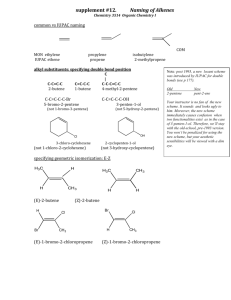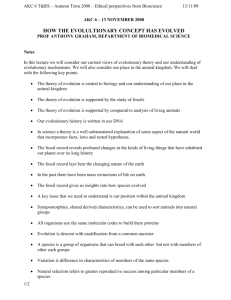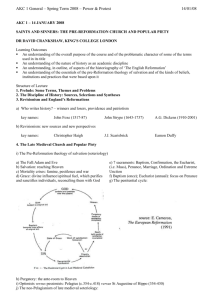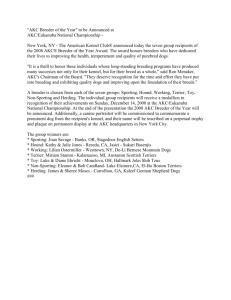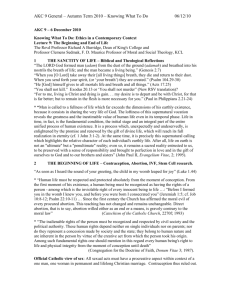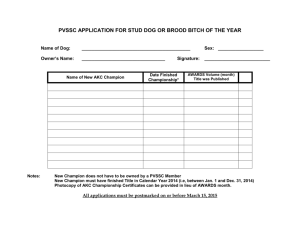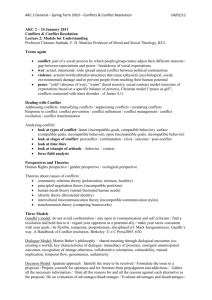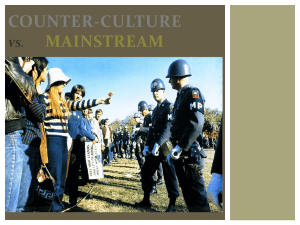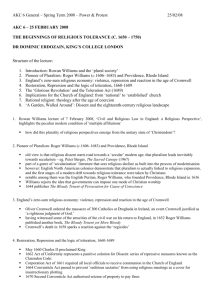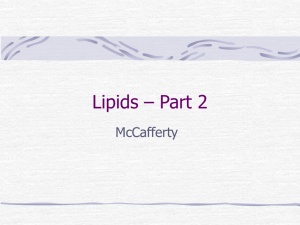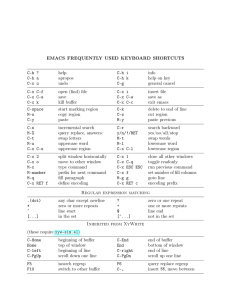Lecture 5 - King`s College London
advertisement
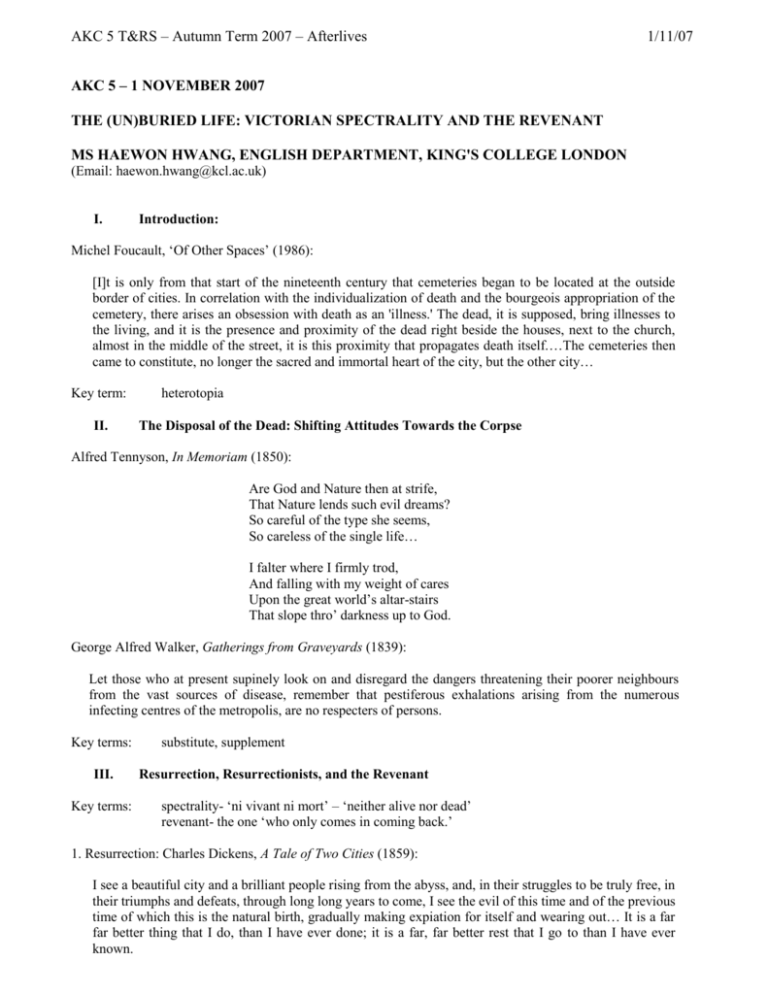
AKC 5 T&RS – Autumn Term 2007 – Afterlives 1/11/07 AKC 5 – 1 NOVEMBER 2007 THE (UN)BURIED LIFE: VICTORIAN SPECTRALITY AND THE REVENANT MS HAEWON HWANG, ENGLISH DEPARTMENT, KING'S COLLEGE LONDON (Email: haewon.hwang@kcl.ac.uk) I. Introduction: Michel Foucault, ‘Of Other Spaces’ (1986): [I]t is only from that start of the nineteenth century that cemeteries began to be located at the outside border of cities. In correlation with the individualization of death and the bourgeois appropriation of the cemetery, there arises an obsession with death as an 'illness.' The dead, it is supposed, bring illnesses to the living, and it is the presence and proximity of the dead right beside the houses, next to the church, almost in the middle of the street, it is this proximity that propagates death itself.…The cemeteries then came to constitute, no longer the sacred and immortal heart of the city, but the other city… Key term: II. heterotopia The Disposal of the Dead: Shifting Attitudes Towards the Corpse Alfred Tennyson, In Memoriam (1850): Are God and Nature then at strife, That Nature lends such evil dreams? So careful of the type she seems, So careless of the single life… I falter where I firmly trod, And falling with my weight of cares Upon the great world’s altar-stairs That slope thro’ darkness up to God. George Alfred Walker, Gatherings from Graveyards (1839): Let those who at present supinely look on and disregard the dangers threatening their poorer neighbours from the vast sources of disease, remember that pestiferous exhalations arising from the numerous infecting centres of the metropolis, are no respecters of persons. Key terms: III. Key terms: substitute, supplement Resurrection, Resurrectionists, and the Revenant spectrality- ‘ni vivant ni mort’ – ‘neither alive nor dead’ revenant- the one ‘who only comes in coming back.’ 1. Resurrection: Charles Dickens, A Tale of Two Cities (1859): I see a beautiful city and a brilliant people rising from the abyss, and, in their struggles to be truly free, in their triumphs and defeats, through long long years to come, I see the evil of this time and of the previous time of which this is the natural birth, gradually making expiation for itself and wearing out… It is a far far better thing that I do, than I have ever done; it is a far, far better rest that I go to than I have ever known. AKC 5 T&RS – Autumn Term 2007 – Afterlives 1/11/07 2. Resurrectionist: Robert Louis Stevenson, ‘The Bodysnatchers’ (1884) A nameless dread was swathed, like a wet sheet, about the body, and tightened the white skip upon the face of Fettes; a fear that was meaningless, a horror of what could not be, kept mounting in his brain…The light fell very clear upon the dark, well-moulded features and smooth-shaven cheeks of a too familiar countenance, often beheld in dreams by both of these young men. A wild yell rang up into the night; each leaped from his own side into the roadway; the lamp fell, broke, and was extinguished… 3. Revenant: Elizabeth Bronfen, Over Her Dead Body: Death, Femininity, and the Aesthetic (1992) In a cultural sense the vampire’s false death is a serious falsification of Christian notions of death as the sleep before Judgement Day. The empty grave of the vampire, with its permeable plate, suggests that these bodies are not waiting for any teleologically oriented resurrection but, based on a cyclic notion of return, reappear prematurely in the world of the living, with their bodies preserved whole. IV. Visions of Hell: The City Undone and Undead George Gissing, The Netherworld (1889) Over the pest-stricken regions of East London, sweltering in sunshine which served only to reveal the intimacies of abomination; across miles of a city of the damned, such as thought never conceived before this age of ours; above streets swarming with a nameless populace, cruelly exposed by the unwonted light of heaven;… the train made its way at length beyond the utmost limits of dread, and entered upon a land of level meadows. James Thompson, The City of Dreadful Delight (1879) As I came through the desert thus it was, As I came through the desert: I was twain, Two selves distinct that cannot join again. Suggestions for Further Reading: Philippe Ariès, Western Attitudes Toward Death: From the Middle Ages to the Present, trans. Patricia M. Ranum (London: Marion Boyers, 1976) Catherine Arnold, Necropolis: London and Its Dead (London: Pocket Books, 2006) Chris Brooks, Mortal Remains: The History and Present State of the Victorian and Edwardian Cemetery (Devon: Wheaton, 1989) James Stevens Curl, The Victorian Celebration of Death (Stroud: Sutton Publishing, 2000) Jacques Derrida, Specters of Marx: The State of the Debt, the Work of Mourning, and the New International, trans. Peggy Kamuf (New York: Routledge, 1994) Michel Foucault, ‘Of Other Spaces’ in Diacritics, vol. 16, no. 1 (Spring 1986) Julian Wolfreys, Victorian Hauntings: Spectrality, Gothic, the Uncanny and Literature (Basingstoke: Palgrave, 2002) Michael Wheeler, Heaven, Hell, and the Victorians (Cambridge: Cambridge University Press, 1994) Full details about the AKC course, including copies of the handouts, can be found on the AKC website at: http://www.kcl.ac.uk/akc. If you have any queries please contact the AKC Course Administrator on ext 2333 or via email at dean@kcl.ac.uk. Please make a note in your diary that the AKC Examination will take place on Monday 21 April between 14.30 and 16.30. YOU MUST REGISTER FOR THE COURSE using the form on the website. You will need to register for the exam separately, information will be provided next semester.

